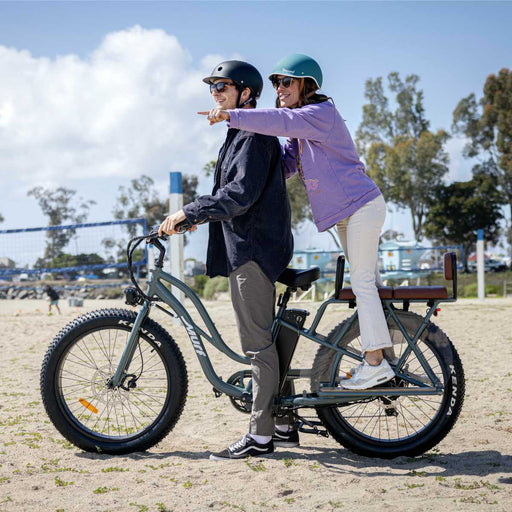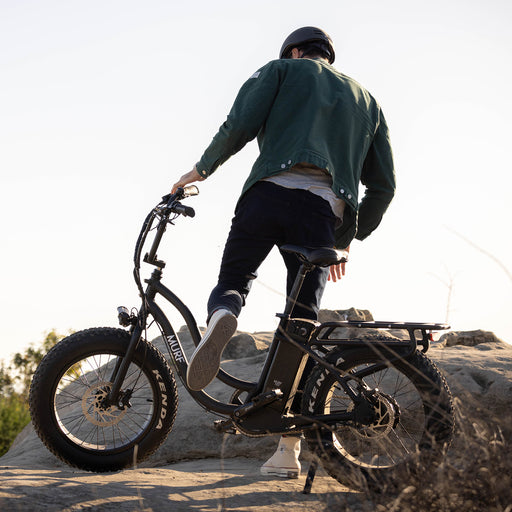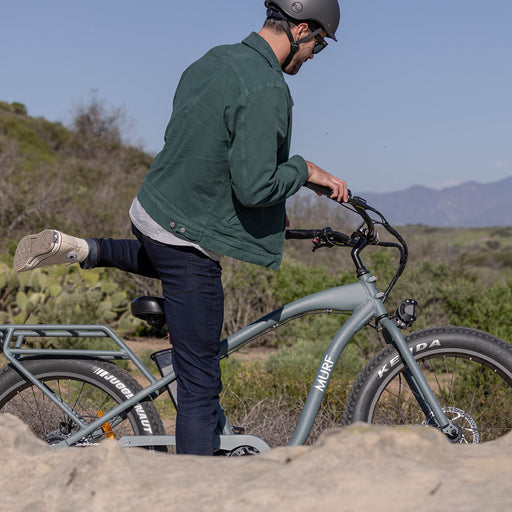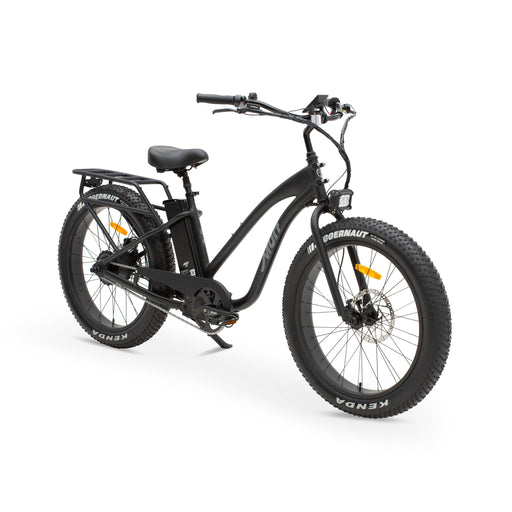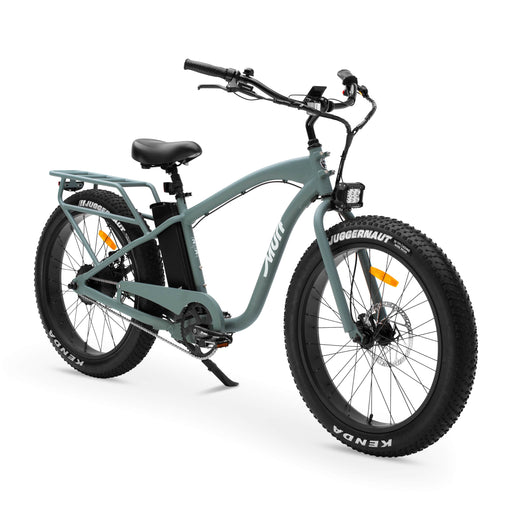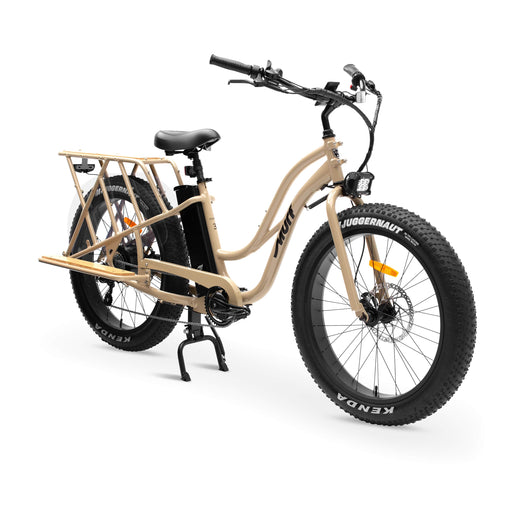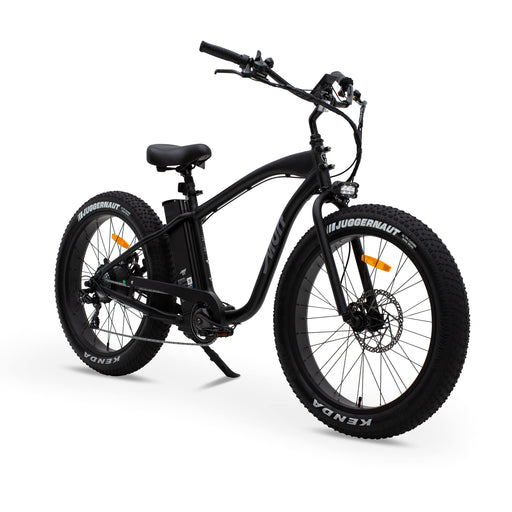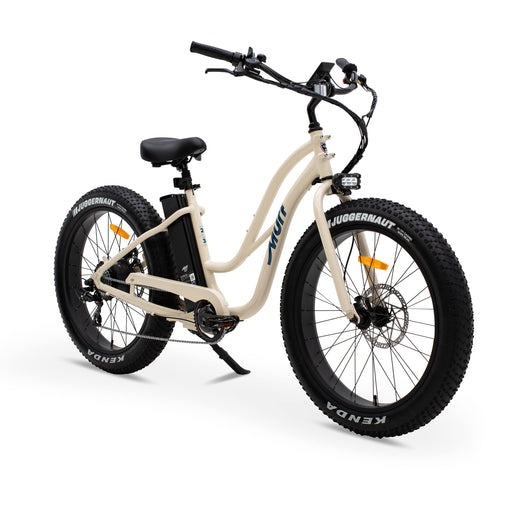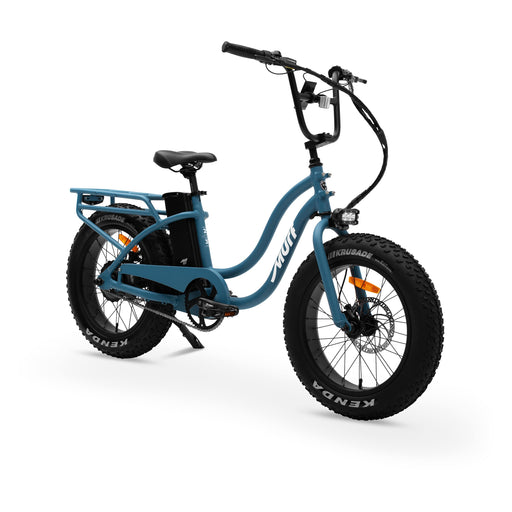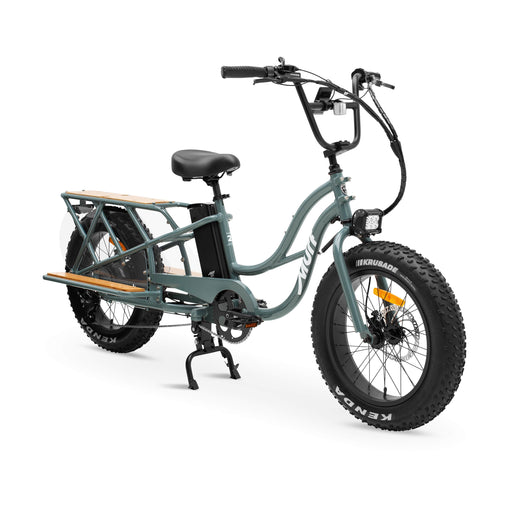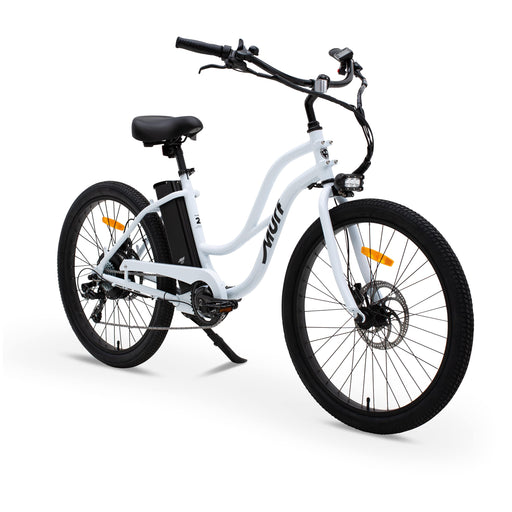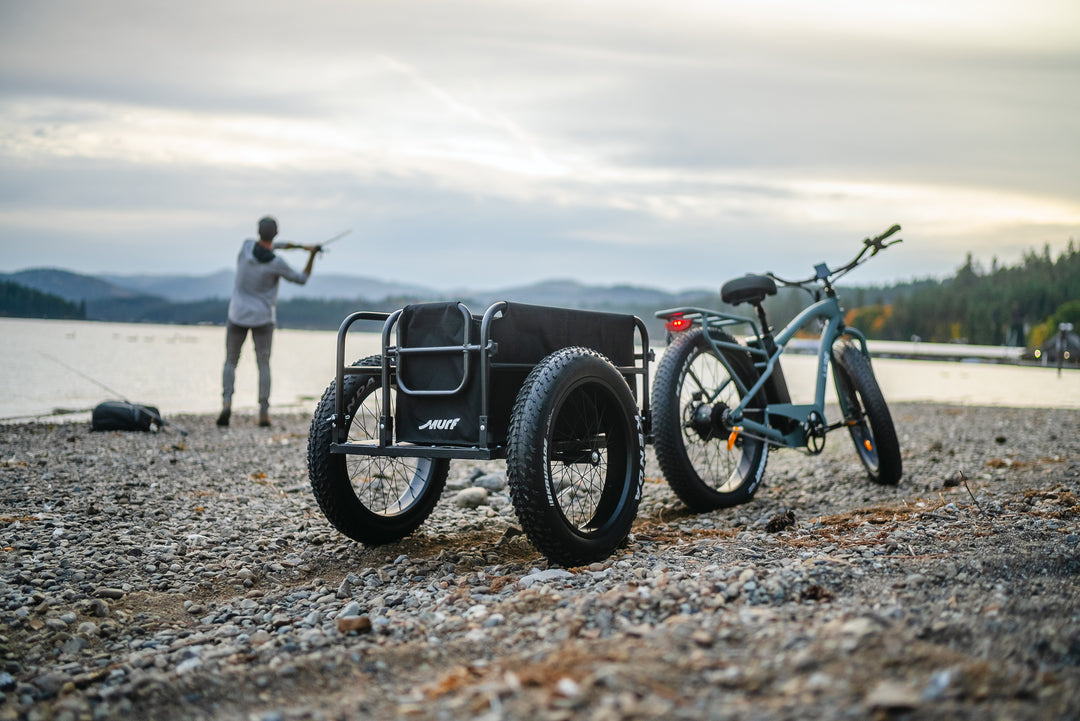All About Electric Bikes
What are E-bikes?
As one of the fastest growing segments in the bicycle industry, many people are curious to know, what exactly is an electric bike? It is not an electric scooter or even a motorcycle, but it is actually a regular bike that has some electrical modifications. An electric bike adds a motor, a battery, and a controller that enhances the biking experience.
- Can E-Bikes Displace Cars?- Since the popularity of e-bikes is increasing, it is a valid question. This article tackles that question and discusses the growth of the e-bike industry.
- Just One Thing: From Bicycle to Electric Bike- This article provides a general overview of e-bikes and their rise to popularity.
- Low-Speed, High-Tech Allure of the 'E-Bike'- "Turbo Bob," a hot-rod enthusiast, gives his take on e-bikes.
- Will Electric Bicycles Get Americans to Start Pedaling?- YaleEnvironment360 discusses e-bikes in general and talks about different brands' goals for their e-bikes.
- Electric Bicycles- Electric bicycles are the best form of motorized transportation for the environment. This gives a general summary of e-bikes and their popularity.
How Electric Bikes Work
Some worry that adding the electrical component to the bike takes away from the human body power that is exerted during a biking session. However, numerous studies show that e-bikers are still getting an exercise. Additionally, many claim that electric bikes actually enhance human power when biking. E-bikes do not completely replace the human power needed to move the bike forward, but they help make hills and other obstacles easier. Additionally, they help the rider go further without getting as tired.
- Advantages of the Electrical Bicycle - Sustainability For All explains some of the advantages and disadvantages of using e-bikes, and they include a description of how e-bikes work.
Three Main Components
E-bikes include a battery, motor, and drivetrain to help the rider as they navigate through challenging terrain. The battery on the electric bike has a range of about 25 to 70 miles per charge. The miles per charge is dependent on how the rider uses the battery. The first option is human power only. The battery can be turned off, so the rider is using their own human power only. The second option is a simple pedal assist. This is when the motor is activated when the pedals are moving. This means the rider is still getting quite the workout, but they have a little bit of a boost. The third option is electric only. With this option, the bike works without help from the rider.
The motor on an electric bike can be found in three different positions including the front wheel, the back wheel and the mid-drive. Naturally, each motor placement provides a different feeling for the rider. The front wheel will provide the feeling of being pulled by the bike; the back wheel will give the feeling of being pushed, and the mid-drive is a more natural riding sensation than either of the wheels.
The drivetrain includes pedals, cranks, chain rings, chain, cogs and derailleur. On an e-bike, these components get power from a mid-drive motor, which makes the chain cranking easier. Most allow the rider to shift gears to adjust the difficulty of pedaling.
- The 3 Critical Components: Motor, Controller, and Battery- This article reviews the main components needed for an electric bike, including some tips on how to build one yourself.
- How Does an Electric Bike Work?- Peter Hunt, an e-bike expert explains how these bikes work and gives some tips on how to maintain the bike.
Charging Your Bike
Of course, since it is electric, the bike does need to be recharged once the battery is drained. Depending on your battery, this may take anywhere from two hours to six hours. Much of how quickly your battery is drained and then recharges is dependent on what kind of battery the bike uses. Higher quality batteries are going to charge faster and last longer on the road and in lifespan, while lower quality batteries are going to drain faster, need to be replaced sooner, and typically take longer to charge.
- How to Charge Your Devices the Right Way- This article discusses the science behind lithium-ion batteries and the best way to get the most life out of your battery.
- Electric Bike Battery Care: Maintaining Battery Life- Electric bike batteries, like any other battery, needs to be taken care of to give them a long lifespan. This article discusses some of the best ways to make an e-bike battery last.
Environmental Impact of Electric Bicycles
With talk of global warming and climate change on the rise, it's no secret people are looking for ways to reduce their carbon footprint. To do so, people need to use less of our non-renewable resources such as gas. One option is to switch from driving cars to riding an e-bike.
- The Case for Electric Bicycles- This article gives an overview of e-bikes and discusses how "green" they are.
- Hey Mr. Green! Are Electric and Pedal-Assist Bikes Sustainable?- Mr. Green discusses how sustainable electric bikes can be.
Zero Emissions
Because e-bikes run on batteries, they are considered zero-emission vehicles. They do not have carbon or other harmful emissions. In fact, an e-bike reduces a person's emissions from transportation by 0.21 metric tons each year.
Preventing Air Pollution
Air pollution is a serious problem that we have worldwide, resulting in several different health issues. The World Health Organization (WHO) has linked air pollution to higher rates of cancer, heart disease, strike, asthma, and other respiratory diseases. Not only that, but the American Lung Association estimates that about 40 percent of the population is at risk for these diseases and premature death because of air pollution. Because air pollution is created by the burning of fossil fuels, e-bikes are a great option for reducing and preventing air pollution.
Long-Lasting Batteries
E-bike batteries might be great for reducing waste, but that does not mean they are 100% environmentally friendly. Like all batteries, e-bike batteries don't last forever, and need to be replaced eventually. These batteries need to be disposed of properly or they could end up in landfills. Alternatively, they can be recycled, reducing their waste even more. In addition to disposing of the battery, charging it can be potentially bad for the environment. There are ways to reduce the carbon-footprint created from charging, but even with consuming electricity, an e-bike consumes the electricity equivalent of only about 1,000 miles per gallon of gasoline.
Off-Peak Charging
Using electricity to charge an e-bike isn't the best for the environment, but many people don't have another option. One can make the best of this electricity use by charging the e-bike during off-peak hours. The off-peak hours are typically overnight and on the weekends, but can vary by season and city. Charging during off-peak hours means that the bike is pulling possible excess power, and helps prevent the power grid from getting overloaded. Typically, electric companies charge less to the customer during off-peak hours, so the individual benefits as well.
Sustainable Energy
Off-peak hours are great for reducing the waste of e-bikes, but there are even better options. Sustainable energy, such as sun and wind power, is a great alternative to regular electricity. To make the e-bike completely environmentally friendly, an individual can charge the bike with solar or wind energy.
Saving Roadways
Not only does an e-bike reduce waste, but it also helps keep the roadways looking good. Because they are lighter, they cause less damage to roadways. Additionally, they are smaller and can fit on sidewalks and bike paths when allowed. Road damage is not only a pain, but it is also environmentally taxing. The heavy machinery needed to fix the road emits large amounts of CO2 and other harmful gases into the environment.
Eco-Friendly Travel
An e-bike can be incredibly efficient, getting the equivalent of up to 1,340 miles per gallon. They are also easier to maneuver than a car and mean the rider is not stuck to a transportation schedule like they might be with a bus or train. It allows more freedom with the open road (or trail or sidewalk), and they are also quieter than other forms of transportation.
A Green Way to Have Fun
E-bikes are not only a great way to reduce the carbon footprint, but they are great for off-roading and exploring areas in nature that are not typically accessible by car or public transportation. There are regulations about where an individual can ride an e-bike, so it is always best to check before taking an e-bike out and about.
- Electric Bikes Figure into California's Zero Emissions Goals- California has a goal of getting 1.5 million zero-emission vehicles on the road by 2025, and e-bikes might be the answer.
- Everything You Need to Know Before Buying an Electric Bike- Curbed answers commonly asked questions about electric bikes.
- Murf Electric Bikes Financing Options- Find ways to finance an electric bike through this link.
- Murf Electric Bikes Shopping- Shop for an e-bike here.
- Murf Electric Bikes- Learn more about Murf electric bikes and other products, while exploring their webpage.





 info@murfelectricbikes.com
info@murfelectricbikes.com
 1-949-218-5920 (SC)
1-949-218-5920 (SC)
 Find Retail or Service
Find Retail or Service
